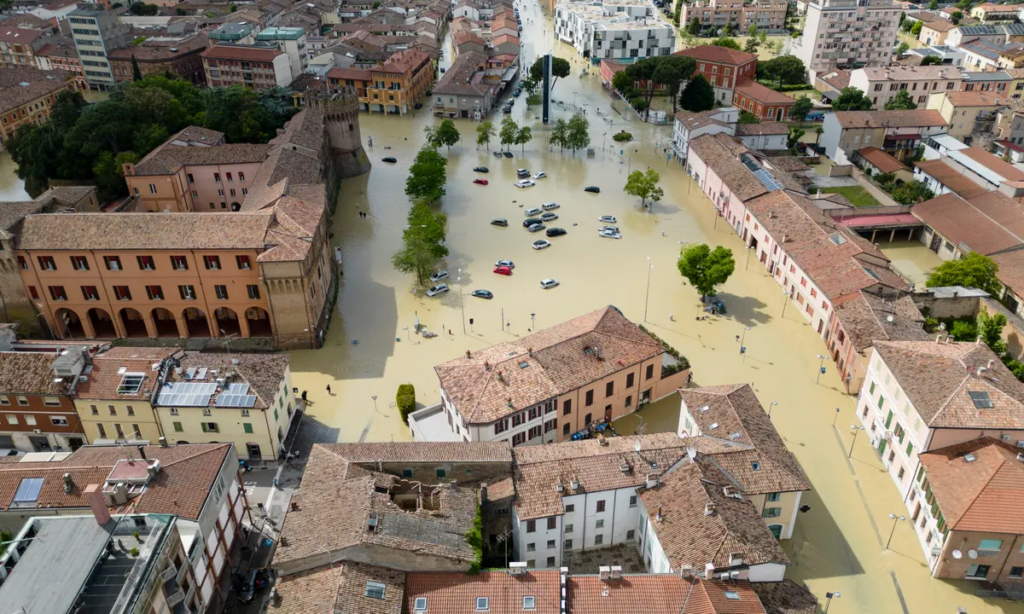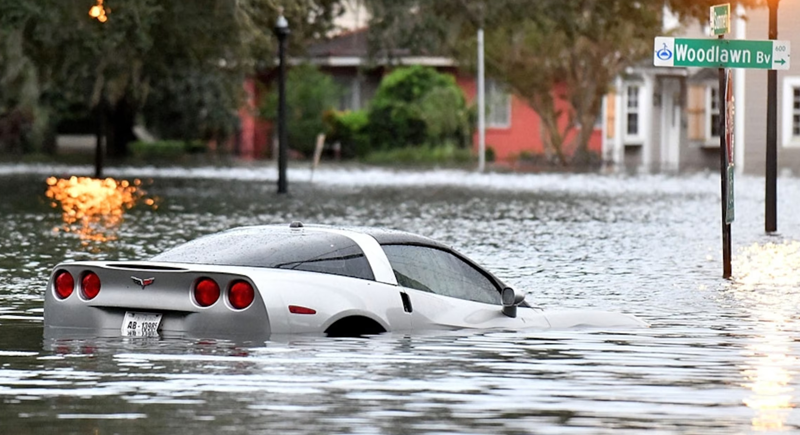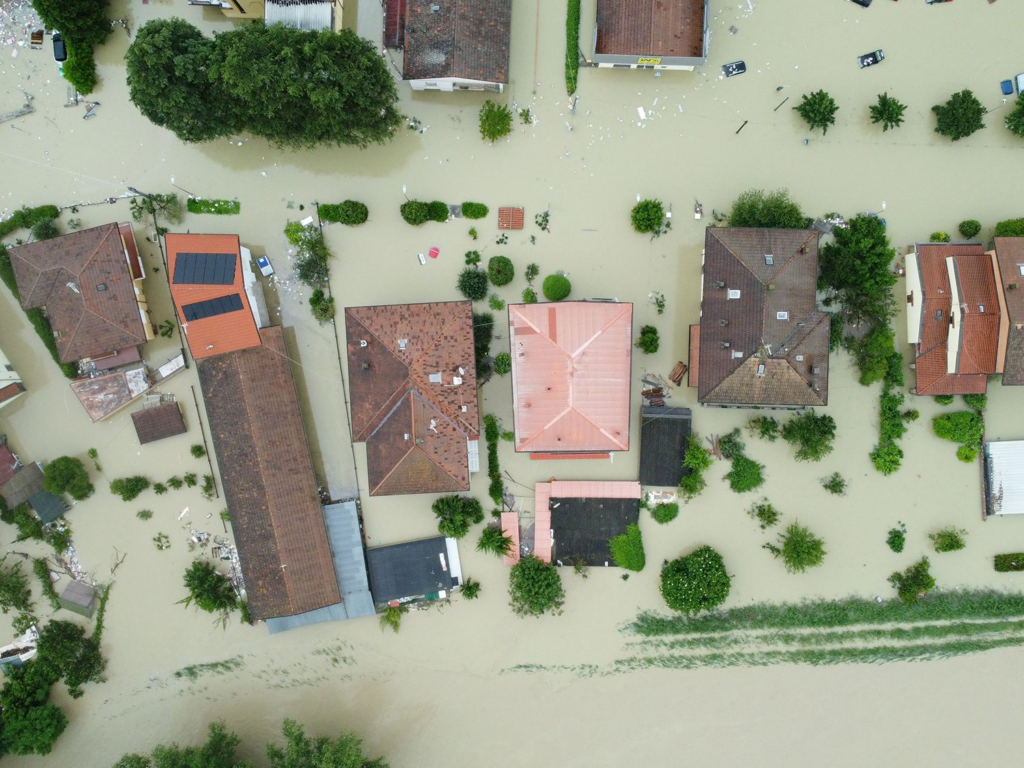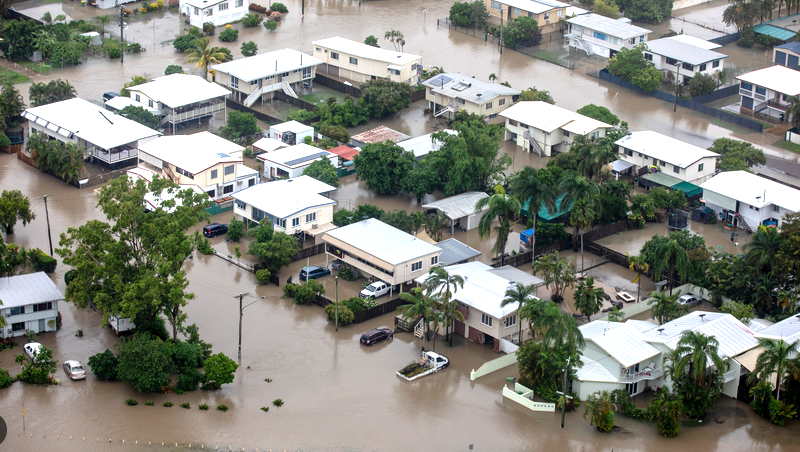2022 Atlantic hurricane season consisted of 14 named storms, which is a near-average outturn following 2021 which was the fifth straight year of new highs. The 2021 season ranked third in named storms since records began, according to Bloomberg Intelligence.
North Atlantic hurricane season

Munich Re has estimated that, following the 2022 North Atlantic hurricane season, overall losses from all storms amounted to around US $110 billion, with insured losses in the magnitude of $65 billion.
Even though 2022 only saw average global catastrophe losses, the Australian floods in February and March caused a record $4 bn of insured losses for local insurers.
Re/Insurers poorly prepared for the increased loss frequency and intensity wrought by flooding and climate change as this year’s North Atlantic hurricane season approaches, with pricing and risk appetite appearing badly aligned (see Global Insured Losses from Natural Catastrophes: Perspective & Trends).
Average global catastrophe losses
On average, flood losses were the third most-costly source of insurance claims over the past 20 years, after cyclones and severe weather.
Catastrophic flood-loss events were the most-numerous peril globally in 2022. Insured losses from natural disasters reached $132 bn, with the US accounting for 75% of this.
Though 2022 was one of the 10 lowest years for deaths from natural catastrophes since 1950, beyond North America and Europe, flooding is a major killer among natural catastrophes (see Climate Risk & Weather-Related Re/Insurance Industry Losses Review_.
It represents 23% of deaths in 2021, 43% of deaths in 2020, 40% in 2019 and 30% in 2018. In 2017 – the most expensive year on record for weather events – floods accounted for a 60%.
Hurricanes & floods a record-high insured loss

European floods in July saw a record-high insured loss of $13 bn, according to Aon. Severe weather was also responsible for most of the big claims in 2022 – insured losses were above the 21st-century normal.
The insured natural-catastrophe losses rose quickly in 2021, with it becoming the fourth most-costly year since 1970, according to Swiss Re; 2020 was the fifth costliest.
Munich Re and Swiss Re lead insurers that have now had three years in a row of insured losses over $100 bn.
Hurricane Ian destroyed at least 2.3 mn homes in Florida. Most of the damage was from storm surges and heavy rain, with less than 20% of Florida homeowners insured against flooding.
The economic and insured losses

According to Global Insured & Economic Losses from Natural Catastrophes Outlook, the economic loss will likely be much higher than the insured loss, at $95 bn. The scale of Hurricane Ian’s losses, particularly in Florida, will likely mean insured losses will drift higher as inflation and litigation add to the toll.
Ian is the second most-costly hurricane after 2005’s Katrina, which cost insurers $99 bn on an inflation-adjusted basis.
Though last year had fewer storms than in 2021, there was significant economic damage inflicted.
Insurance rates don’t appear to adequately reflect the threat of flooding as climate change brings more-intense rain events.
Aon had 2022 insured natural-catastrophe losses of $132 bn, 57% more than the average since 2000.
The biggest losses are getting larger, with many scientists blaming greater precipitation. Simply applying a multiple to historical large losses is likely to result in poor loss forecasts as more real estate is developed.
Hurricane Ian alone is expected to generate losses of $100 billion, Munich Re said, with $60 billion of these losses to be passed on to private re/insurers.
These insured loss figures exclude losses from the National Flood Insurance Program (NFIP), analysts specified, which is expected to incur costs of $3.5 billion to $5.3 billion just from Hurricane Ian, based on claims submitted so far.
Reflecting on the hurricane season

Reflecting on the 2022 hurricane season has suggested that the year shows a continuation of a trend of growing insured losses, with climate change a clear factor.
Munich Re notes that this year’s hurricane season in the North Atlantic actually produced fewer storms than originally feared, but the devastating damage caused by Hurricane Ian in Florida resulted in it becoming the third-most expensive hurricane season to date.
2022 continues the trend of increasing losses from US hurricanes in recent years. Additionally, just a single storm like Ian is enough to cause immense losses.
This is not new, of course, but it is important. Because it is precisely hurricanes like Ian – very strong storms with extreme precipitation – that will occur more frequently in the future due to climate change.
By the official end of the storm season in late November, 14 named storms had been counted in the North Atlantic, of which eight reached hurricane strength and two were storms of the most severe categories 3–5.
Although this means that storm activity was above the long-term average for 1950–2021, it was below the average since 1995 for a storm-active warm phase in the North Atlantic.
At the beginning of the hurricane season, all research institutes, including Munich Re, had expected a higher number of hurricanes due to prevailing La Niña conditions, but unusually dry air in higher layers of the atmosphere and temporarily cooler water temperatures in the tropical North Atlantic meant that only a few and mostly weaker storms developed early in the season until the end of August.
In September, the storm season picked up speed as Hurricane Fiona in the Caribbean developed into the first major hurricane of the season, followed by the Hurricane Ian at the end of the month, which became the fifth-strongest storm ever to hit the US mainland.
Tropical cyclones are one of the biggest risks for insurers, Munich Re concluded. Their number in a single year is influenced by both local and large-scale weather systems and ocean temperatures, and the number and location of storms making landfall cannot be accurately predicted.
The most intense storm on record is Typhoon Tip in the northwestern Pacific Ocean in 1979, which reached a minimum pressure of 870 hPa (26 inHg) and maximum sustained wind speeds of 165 kn (85 m/s; 306 km/h; 190 mph).
The highest maximum sustained wind speed ever recorded was 185 kn (95 m/s; 343 km/h; 213 mph) in Hurricane Patricia in 2015—the most intense cyclone ever recorded in the Western Hemisphere.
……………..
Edited & Fact checked by 








